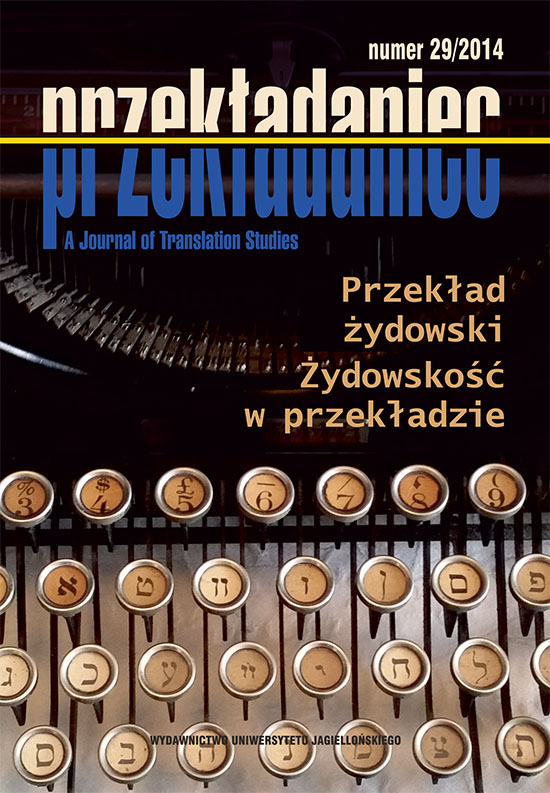Manewry wokół “muru chińskiego”. Tłumaczenia z literatury jidysz na polski przed pierwszą wojną światową
Manoeuvers around “the Great Wall of China”: Translations of Yiddish Literature into Polish before the First World War
Author(s): Natalia KrynickaSubject(s): Language and Literature Studies, Jewish studies, Studies of Literature, Theology and Religion, Jewish Thought and Philosophy
Published by: Wydawnictwo Uniwersytetu Jagiellońskiego
Keywords: Yiddish literature; literary translations; Jews in Poland; Polish-Jewish relations;Jewish identity;
Summary/Abstract: This article addresses the complex relationship of both Jews and non-Jews to Yiddish language and Jewish literature in Poland. It analyses the evolution of translators’ motivations and their approach to the original texts, as well as the reactions of readers of Jewish literature during three decades (1885–1914). The study opens with the first translations from Yiddish into Polish (and at the same time the first translations from Yiddish to foreign languages in general): Klemens Junosza-Szaniawski’s Donkiszot żydowski (The Jewish Don Quixote, 1885) and Szkapa (The Nag, 1886) by Mendele Moykher Sforim (Sholem-Yankev Abramovitsh). Their publication was a notable event in Warsaw’s intellectual circles and provoked lively polemics in the press. In his introduction, Junosza used the expression “the Great Wall of China” to define the barriers dividing the Jewish and Polish societies, which he hoped to overcome at least in part through his translations. The phrase was later adopted by critics and the following generation of translators, who regularly, albeit with different intentions, made references to the work of their predecessor. Apart from the translations of Mendele’s novels, the article also discusses the texts published by Yiddish-language writers in assimilatory periodicals in Congress Poland (Izraelita in Warsaw) and in Galicia (Ojczyzna in Lwów). They were programmatically hostile to the language of Ashkenazi Jews, but their relationship to Yiddish literature turns out to have been more complex and changing with time. The analysis also includes: the anthology Miliony! (Millions!, 1903) translated by Jerzy Ohr, a journalist close to the extreme right circles; Miasteczko (The Shtetl, 1910) by Sholem Ash, whose introduction reflected the radicalization of Polish-Jewish relations; and Safrus (1905), a collection of fiction and essays edited by Jan Kirszrot, who represented the Jewish nationalist milieu. These translations and their reception illustrate well the complex issues of identity, cultural belonging, assimilation, return to the roots, image of the Other, cultural stereotypes or fascination and rejection, characteristic of a multicultural and a multinational society.
Journal: Przekładaniec.
- Issue Year: 2014
- Issue No: 29
- Page Range: 92-117
- Page Count: 26
- Language: Polish

